
Concept explainers
(a)
Interpretation:
The Lewis structure of molecules or ions, spatial orientation of electron pairs and the simple geometric structure indicating the approximate bond angles of that molecules or ions should be determined.
Concept Introduction:
Lewis structure represents the valence electron arrangement around the atoms of the molecule. Lewis structure can be drawn for ionic or covalent bonds.
When predicting the geometric structure, VSPER theory is used. The three-dimensional structure of atoms in.
Answer to Problem 46CR
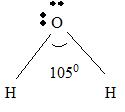
Explanation of Solution
For H2 O
Part A Step 1 →
Sum(total atoms)
Step 2 →
Pair of electrons =

Electron pairs for bonds =
Step 3 → Remaining electron pairs = 2
Part B Step 1 → Lewis structure

Step 2 → 4 electron pairs around
Step 3 → But around the
No: of bonding pairs =
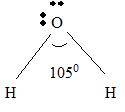
No: of non- bonding pairs =
Step 4 → Name of the structure = V-shaped or Bend.
(b)
Interpretation:
The Lewis structure of molecules or ions, spatial orientation of electron pairs and the simple geometric structure indicating the approximate bond angles of that molecules or ions should be determined.
Concept Introduction:
Lewis structure represents the valence electron arrangement around the atoms of the molecule. Lewis structure can be drawn for ionic or covalent bonds.
When predicting the geometric structure, VSPER theory is used. The three-dimensional structure of atoms in.
Answer to Problem 46CR
Explanation of Solution
For PH3 Part A Step 1 →
Sum
Step 2 → Pair of electrons =
Electron pairs for bonds =
Step 3 → Remain electron pairs =
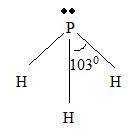
Part B Step 1 → Lewis structure
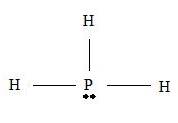
Step 2 →
Step 3 → But around the
No: of non- bonding pairs = 1
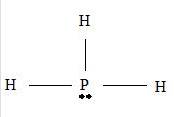
Step 4 → Name of the structure = Trigonal pyramid.
(c)
Interpretation:
The Lewis structure of molecules or ions, spatial orientation of electron pairs and the simple geometric structure indicating the approximate bond angles of that molecules or ions should be determined.
Concept Introduction:
Lewis structure represents the valence electron arrangement around the atoms of the molecule. Lewis structure can be drawn for ionic or covalent bonds.
When predicting the geometric structure, VSPER theory is used. The three-dimensional structure of atoms in.
Answer to Problem 46CR
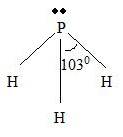
Explanation of Solution
CBr4 Part A. Step 1 →
Sum = 32
Step 2 → Pair of electrons =
Electron pairs for bonds =
Step 3 → Remain electron pairs =
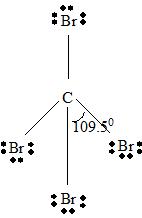
Part B Step 1 → Lewis structure
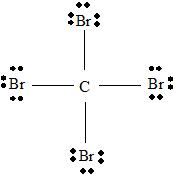
Step 2 →
Step 3 → But around the
No: of non- bonding pairs =
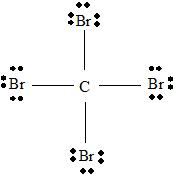
Step 4 → Name of the structure = Tetrahedral.
(d)
Interpretation:
The Lewis structure of molecules or ions, spatial orientation of electron pairs and the simple geometric structure indicating the approximate bond angles of that molecules or ions should be determined.
Concept Introduction:
Lewis structure represents the valence electron arrangement around the atoms of the molecule. Lewis structure can be drawn for ionic or covalent bonds.
When predicting the geometric structure, VSPER theory is used. The three-dimensional structure of atoms in.
Answer to Problem 46CR
Explanation of Solution
For ClO4 -
Part A. Step 1 →
Sum =
Step 2 → Pair of electrons =
Electron pairs for bonds =
Step 3 → Remain electron pairs =
Part B Step 1 → Lewis structure

Step 2 →
Step 3 → But around the
No: of non- bonding pairs =
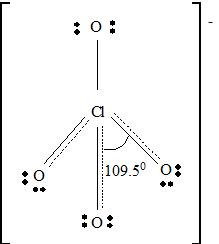
Step 4 → Name of the structure = Tetrahedral
But considering resonance, the exact position of three p bonds cannot be determined exactly. It provides a p cloud over the molecule. So that a resonance hybrid determines the exact structure of ClO4 - molecule.
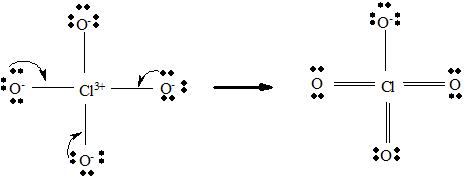
(e)
Interpretation:
The Lewis structure of molecules or ions, spatial orientation of electron pairs and the simple geometric structure indicating the approximate bond angles of that molecules or ions should be determined.
Concept Introduction:
Lewis structure represents the valence electron arrangement around the atoms of the molecule. Lewis structure can be drawn for ionic or covalent bonds.
When predicting the geometric structure, VSPER theory is used. The three-dimensional structure of atoms in.
Answer to Problem 46CR
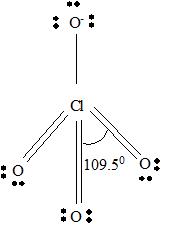
Explanation of Solution
BF3
Part A. Step 1 →
Sum =
Step 2 → Pair of electrons =
Electron pairs for bonds =
Step 3 → Remain electron pairs =

Part B Step 1 → Lewis structure

Step 2 →
Step 3 → Also around the
No: of bonding pairs =
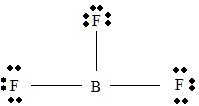
No: of non- bonding pairs =
Step 4 → Name of the structure = Trigonal planar.
(f)
Interpretation:
The Lewis structure of molecules or ions, spatial orientation of electron pairs and the simple geometric structure indicating the approximate bond angles of that molecules or ions should be determined.
Concept Introduction:
Lewis structure represents the valence electron arrangement around the atoms of the molecule. Lewis structure can be drawn for ionic or covalent bonds.
When predicting the geometric structure, VSPER theory is used. The three-dimensional structure of atoms in.
Answer to Problem 46CR
Explanation of Solution
BeF2
Part A. Step 1 →
Sum =
Step 2 → Pair of electrons =
Electron pairs for bonds =
Step 3 → Remain electron pairs =
Part B Step 1 → Lewis structure
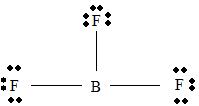
Step 2 →
Step 3 → Also around the
No: of non- bonding pairs =
Step 4 → Name of the structure = Linear
 .
.
Want to see more full solutions like this?
Chapter 12 Solutions
Introductory Chemistry: A Foundation
- 6. For each of the following, fill in the synthesis arrows with reagents and show the intermediates. You DO NOT need to use the same number of arrows that are shown (you may use more or less), but the product must be formed from the reactant. Then write the mechanism of one step in the synthesis (you can choose which step to write the mechanism for), including all reagents required, clearly labeling the nucleophile and electrophile for each step, and using curved arrows to show the steps in the mechanism. a. b. OHarrow_forwardDraw the productsarrow_forwardDraw the correct productsarrow_forward
- E Organic Chemistry Maxwell Draw the correct products, in either order, for the ozonolysis reaction: 1) O3, CH2Cl2, -78 °C Product 1 + Product 2 2) Zn, HOAc Draw product 1. Select Draw Templates More C H O presented by M Draw product 2. Erase Select Draw Templates M / # # carrow_forward✓ edict the products of this organic reaction: ---- ။ A CH3–C−NH–CH2–C−CH3 + KOH ? Specifically, in the drawing area below draw the condensed structure of the product, or products, of this reaction. If there's more than one product, draw them in any arrangement you like, so long as they aren't touching. If there aren't any products because this reaction won't happen, check the No reaction box under the drawing area. Explanation Check Click anywhere to draw the first atom of your structure. C 2025 McGraw Hill LLC. All Rights Reserved. Terms of Use | Privacy Center | Accessibiliarrow_forwardPredict the product of this organic reaction: A HO-C-CH3 + CH3NH2 P+ H2O Specifically, in the drawing area below draw the condensed structure of P. If there is no reasonable possibility for P, check the No answer box under the drawing area. Explanation Check Click anywhere to draw the first atom of your structure. marrow_forward
- H 1) OsO4, pyridine 2) Na2SO3 or NaHSO3 in H₂O 2 productsarrow_forward● Biological Macromolecules Naming and drawing cyclic monosaccharides Your answer is incorrect. • Row 1: Your answer is incorrect. Row 3: Your answer is incorrect. • Row 4: Your answer is incorrect. Try again... 0/5 Give the complete common name, including anomer and stereochemistry labels, of the following molecules. You will find helpful information in the ALEKS resource. CH2OH OH OH H H I H OH OH H] H CH2OH H OH ẞ-L-sorbose HOCH2 OH OH H HOCH2 H OH OH H OH H H CH2OH OH H H OH H I- H OH H OH Explanation Recheck W E R % 25 α B Y X & 5 D F G H McGraw Hill LLC. All Rights Reserved. Terms of Use | Pr Parrow_forwardWhat is the missing reactant in this organic reaction? + R -A HO IN + H₂O Specifically, in the drawing area below draw the skeletal ("line") structure of R. If there is more than one reasonable answer, you can draw any one of them. If there is no reasonable answer, check the No answer box under the drawing area. Note for advanced students: you may assume no products other than those shown above are formed. Explanation Check Click and drag to start drawing a structure. © 2025 McGraw Hill LLC. All Rights Reserved. Terms of Use | Privacy Centerarrow_forward
- Stuc X ctclix ALE X A ALE אן A ALEX Lab (195 X Nut x M Inb x NU X NUT X Unt x + → C www-awu.aleks.com/alekscgi/x/Isl.exe/10_u-lgNslkr7j8P3jH-IQ1g8NUi-mObKa_ZLx2twjEhK7mVG6PulJI006NcKTV37JxMpZuyrVCdQolLAKqp_7U3r1GUD3... New Chrome available: Naomi Question 26 of 39 (4 points) | Question Attempt: 1 of Unlimited Give the IUPAC name. 2,3-dimethylhexane Part: 1/2 Part 2 of 2 Draw the skeletal structure of a constitutional isomer of the alkane above that contains a different number of carbons in its longest chain. Skip Part Check Click and drag to start drawing a structure. 3 Finance headline Q Search mwa Harvard Intensifi... X Save For Later 00 dlo HB Submit Assignment 2025 McGraw Hill LLC. All Rights Reserved. Terms of Use | Privacy Center | Accessibility a 9:11 PM 4/22/2025arrow_forwardPredict the product of this organic reaction: + NH2 HO A P+ H2O Specifically, in the drawing area below draw the skeletal ("line") structure of P. If there is no reasonable possibility for P, check the No answer box under the drawing area. Click and drag to start drawing a structure. ✓arrow_forward个 Stuc X ctclix ALE X A ALE × A ALE X Lab x (195 × Nut x M Inbx EF 目 → C www-awu.aleks.com/alekscgi/x/Isl.exe/10_u-IgNslkr7j8P3jH-IQ1g8NUi-mObKa_ZLx2twjEhK7mVG6PulJI006NcKTV37JxMpz Chapter 12 HW = Question 27 of 39 (5 points) | Question Attempt: 1 of Unlimited Part: 1/2 Part 2 of 2 Give the IUPAC name. Check 3 50°F Clear ©2025 McGraw Hill L Q Search webp a عالياكarrow_forward
 Chemistry by OpenStax (2015-05-04)ChemistryISBN:9781938168390Author:Klaus Theopold, Richard H Langley, Paul Flowers, William R. Robinson, Mark BlaserPublisher:OpenStax
Chemistry by OpenStax (2015-05-04)ChemistryISBN:9781938168390Author:Klaus Theopold, Richard H Langley, Paul Flowers, William R. Robinson, Mark BlaserPublisher:OpenStax Chemistry & Chemical ReactivityChemistryISBN:9781133949640Author:John C. Kotz, Paul M. Treichel, John Townsend, David TreichelPublisher:Cengage Learning
Chemistry & Chemical ReactivityChemistryISBN:9781133949640Author:John C. Kotz, Paul M. Treichel, John Townsend, David TreichelPublisher:Cengage Learning Chemistry & Chemical ReactivityChemistryISBN:9781337399074Author:John C. Kotz, Paul M. Treichel, John Townsend, David TreichelPublisher:Cengage Learning
Chemistry & Chemical ReactivityChemistryISBN:9781337399074Author:John C. Kotz, Paul M. Treichel, John Townsend, David TreichelPublisher:Cengage Learning
 ChemistryChemistryISBN:9781305957404Author:Steven S. Zumdahl, Susan A. Zumdahl, Donald J. DeCostePublisher:Cengage Learning
ChemistryChemistryISBN:9781305957404Author:Steven S. Zumdahl, Susan A. Zumdahl, Donald J. DeCostePublisher:Cengage Learning Chemistry: An Atoms First ApproachChemistryISBN:9781305079243Author:Steven S. Zumdahl, Susan A. ZumdahlPublisher:Cengage Learning
Chemistry: An Atoms First ApproachChemistryISBN:9781305079243Author:Steven S. Zumdahl, Susan A. ZumdahlPublisher:Cengage Learning





